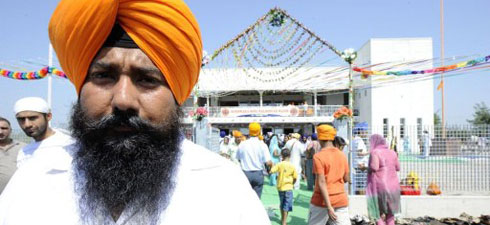Alongside common local last names like Ferrari and Galli, the telephone directories for the province of Cremona have been registering an increasingly present surname: Singh.
For the past 20 years, Indian immigrants from Punjab have been settling in Italy’s agricultural heartland to work primarily on farms, often as bergamini, as dairy workers are known in the native dialect.
It has been said that if the Indian workers went on strike, production of Grana Padano, the hard, grainy, spaghetti-topper that this tract of the Po Valley is known for, would shut down.
“Well, I don’t know if production would stop, but it would certainly create many difficulties,” said Simone Solfanelli, the president of the Cremona chapter of Coldiretti, Italy’s largest agricultural organization. “I can tell you that they are indispensable for farming,” and for the milk produced in the province — at one million tons per year, about a tenth of all milk produced in Italy, he added.
The Indians, many of whom are Sikhs, first arrived in the area just as a generation of dairy workers was retiring, with no substitutes in sight.
“They saved an economy that would have gone to the dogs because young people didn’t want to work with cows,” Mayor Dalido Malaggi of Pessina Cremonese said. Though the dairy industry is mostly mechanized today, human labor is still necessary 365 days a year, he explained.
The work is split in two four-hour shifts per day, about 12 hours apart. “Young Italians don’t want to work those kinds of hours,” he said. “They’d prefer to work in factories and have evenings and weekends free.”
It was a fortunate match, because many of the immigrants already knew what it took to keep a farm running.
“This is dairy land, and many of us have cows in Punjab,” said Jaswinder Duhra, who has lived in Italy for 25 years, working first as a bergamino and then for one of Italy’s best-known cheese manufacturers. “We’re used to the work that we do here.” Read full article in the New York Times...
Was this article useful? If so we are delighted!
It is freely available because we believe that the right to free and independent information is essential for democracy. But this right is not guaranteed forever, and independence comes at a cost. We need your support in order to continue publishing independent, multilingual news for all Europeans.
Discover our subscription offers and their exclusive benefits and become a member of our community now!












